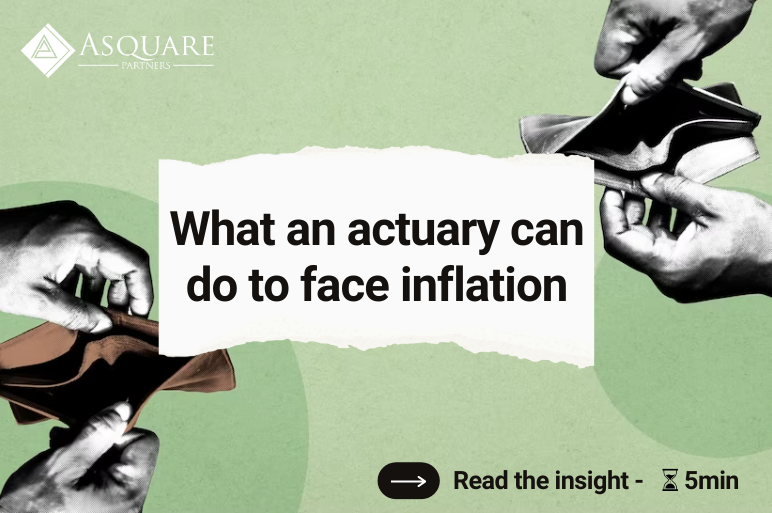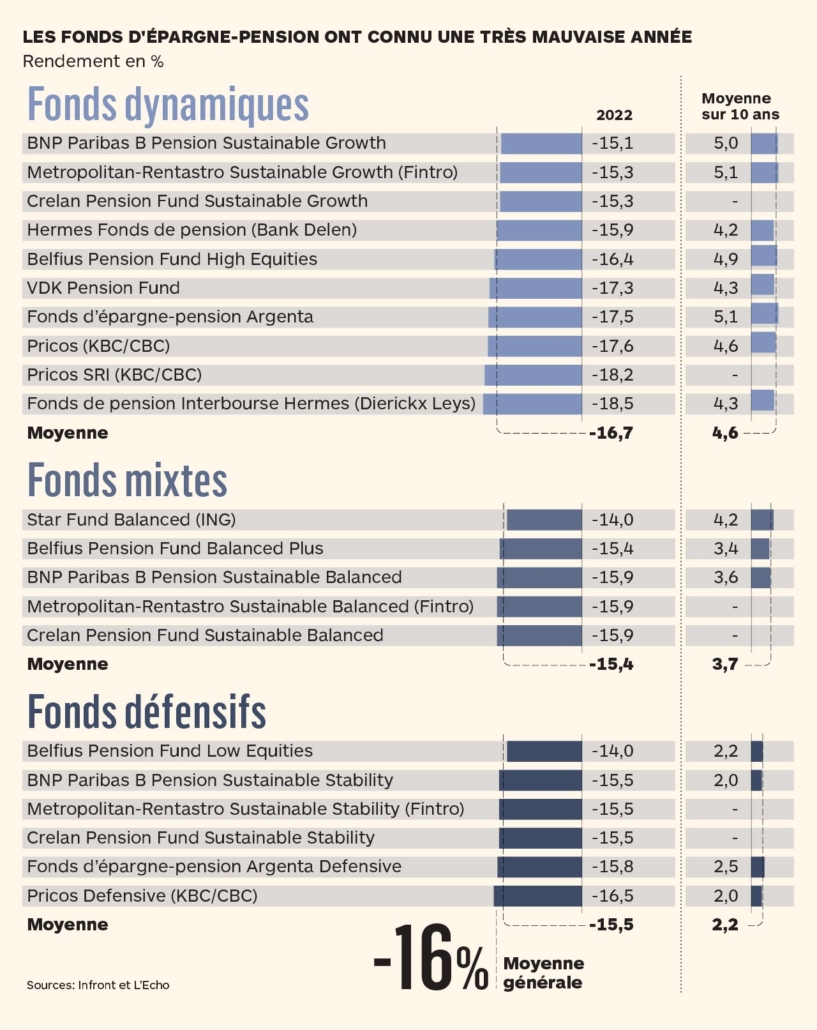Every month, we help you keep up with the Belgian and Luxembourg insurance markets.
- Partnership
- Product
- Market
- Financial results
- Legislation
Partnership

In Luxembourg, Luxhub and Vermeg, a software specialist, join forces to launch Custodix Hub. Custodix Hub is a solution created to collect data from depository banks so that life insurers can more easily organize them. (Check out their presentation)
The main reason for this partnership is the cost of data management for life insurance companies, especially in the context of digital evolution. Indeed, data becoming increasingly sophisticated and the ability to process different formats are main factors of rise in costs.
Custodix Hub allows the automation of processes and the structuration of data coming from depository banks. These data, such as movements in securities and securities positions, are processed in specific formats, proper to banks, which makes it difficult for life insurance companies to process.
Custodix Hub, therefore, provides an opportunity to facilitate the process of a format change for insurers.
Product
AXA has introduced a new service as part of its group hospital insurance: a second medical opinion. This second opinion includes an online consultation with a doctor and a physical consultation in a hospital.
To request this second opinion, the policyholder will be accompanied by a personal assistant throughout the process.
This service is launched to meet the needs of policyholders who are diagnosed with a serious illness or who have to undergo a major operation. In addition, this service is a complement to the range of services offered for health insurance.
Market
AG College: new training program by AG Insurance
AG launched a new training program called AG College. The objective? Training AG’s own talent in order to meet the recruitment challenges of the market.
Concretely, the 6-months program includes technical trainings, a first evaluation after 3 months and a final evaluation. If candidates successfully pass the final evaluation, they get a permanent contract as a file administrator for car insurance or health care.
AG College, a first in the sector, has been created in partnership with the AG’s HR teams, AG Business Schools and Fopas.
Natural disasters: single compensation scheme to be set up
By the end of 2022, 97% of the files concerning the victims of the floods that hit Belgium in 2021 had been completed.
However, the amount of the capped intervention to which insurers have to limit themselves in order to maintain their solvency is considered insufficient. The insurers have therefore decided, in consultation with the authorities, to set up a single compensation scheme to ensure the compensation of policyholders who are victims of future natural disasters.
Hilde Vernaillen, President of Assuralia, stresses that without a single compensation scheme applicable to the whole country, it is impossible for insurers to cover the risk properly and to reinsure it at a decent price. Therefore, a harmonized system is necessary to avoid a solvency problem for insurers or higher premiums for consumers.
Fewer requests from motorists submitted to the Pricing Agency
This year, only 33,255 applications for motor insurance from ‘uninsurable’ motorists were submitted to the Pricing Agency, a decrease of 6.4% compared to 2021.
It is worth noting that the number of applications increases each year, but the rate of increase is lower each time.
In 2022, 24,036 contracts were agreed with insurance companies.
AXA’s digitalisation programme and climate commitment
AXA Belgium is a leading insurer when it comes to developing efficient digital customer experiences and its digitalization strategy does not end there. Indeed, 73% of the customer experience is digitalised and takes place on MyAXA, which has seen a 50% increase in the number of users. MyAXA allows consumers to report a claim directly via the application.
Additionally, in the context of protection against climate risks, AXA has also introduced the Eco Repair Score, a tool that defines the environmental impact of repairing damaged vehicles. In addition, the AXA Research Fund as well as the River Cleanup action and the Climate School are other tools deployed by the insurer to display its commitment to the climate.
Financial results
KBC
As regards its non-life insurance activity, KBC reported an amount of 204 million euros for its technical income. This amount represents an increase of 4% compared to 2021. Earned premiums remained stable compared to the previous quarter. In addition, the amount of reinsurance transferred decreased and technical expenses increased.
Regarding life insurance, technical income reached 16 million euros, an increase of 6 million compared to the previous year. The sale of life insurance products, including branch 23 products and products with a guaranteed interest rate, also increased by 34% compared to 2021.
In addition, KBC also announced its partnership with PetExpert to offer insurance for our dogs and cats.
Allianz Benelux
Allianz Benelux also published its results for the previous year. Its net result amounted to 217 million, an increase compared to 2021.
Non-life premium income reached 1,582 million euros, an increase of 2.4%. However, premium income on the life segment fell by 18.4% to 1,864 million euros.
The operating result of its non-life segment increased compared to 2021, reaching 185.1 million euros. On the life segment, the result also increased to 160.1 million euros, partly due to a higher investment margin.
Ageas
It is now Ageas‘ turn to publish its results. The Belgian insurer reports a net result of 1.01 billion, an increase of 20% compared to 2021.
This net result is explained by the purchase of the Fresh bonds and RPN(i) securities, two financial securities inherited from Fortis Bank. However, analysts advise to exclude these as they do not provide any information on the performance of Ageas’ activities. For instance, if the profits generated by the NPRs are not taken into account, the net result would be equivalent to 871 million.
On the life segment, premium income increased by 1%, driven by good results in the Asian market. The European markets showed a decline in life business.
On the non-life segment, premium income increased by 4%, reflecting growth in all markets.
AXA
Unlike its competitors, AXA‘s turnover increased but its net income decreased by 11%.
Indeed, its turnover reached 102.3 billion euros. However, its net income fell by 11%, due to the unfavourable situation of the financial markets. At group level, revenues for the P&C and health businesses increased by 2% and 16% respectively.
In Belgium, turnover increased by 3% to reach 3.58 billion euros. The health business in particular stood out, with a 9% increase, followed by the non-life business, which rose by 3%.
Results for life insurance stagnated, due to the change in legislation for the pension of the self-employed.
Legislation
The EESC opinion on a new liability regime concerning AI
As AI becomes more and more central to the activities of companies, they are more prone to damage caused by it. The European Commission has drafted a proposal for a law on this issue, on which the EESC has expressed an opinion.
Both agree not to choose no-fault liability or compulsory insurance. However, the EESC would like to provide legal certainty to encourage companies to use AI in their business. Civil liability guarantees could be called upon in this respect.
In addition, compensation for companies that incur damage due to the use of AI will not be harmonised at a national level. The EESC, supported by the social partners, civil society and consumers, is therefore awaiting a response from the Commission in this respect.
Draft law on fire insurance linked to a mortgage loan
In order to grant a mortgage loan, the bank often encourages its customers to take out fire insurance or an outstanding balance. This practice allows for a lower interest rate for the customers.
However, there have been complaints from customers who could not change their fire insurance to a more attractive offer from a competitor without seeing the interest rate on their loan increase.
The Minister for the Economy has proposed that this practice should stop, allowing consumers to change their fire insurance after 2 years without losing the interest rate set at the time of purchase.
Workmen’s compensation: new draft law
In 2021, the number of claims for workers’ compensation refused by insurance companies was 14,8%. But, if an insurance company refuses to pay a compensation, it must report this to Fedris, which may then decide to pursue an investigation.
In 2021, only 3,609 investigations were opened and 18,199 refusals were not checked. The CD&V reports that only one-sixth of the refusals were checked by Fedris, which explains why many victims’ files were wrongly refused.
The CD&V, therefore, wants Fedris to conduct an investigation into all compensation files that have been refused by insurers. If the insurer contests, it will have to pay a fee of €100 to Fedris.
In addition, the CD&V wants victims of such accidents to be better informed. According to the political party, scheme for married couples and legal cohabitants should be harmonized and actions should be undertaken to improve vulnerable position of temporary workers.
Sources:
- Paperjam, Les données dépositaires, clés de voûte de l’assurance-vie en LPS
- Assuropolis, AG lance l’« AG College », un programme de formation inclusif pour les personnes sans diplôme de l’enseignement supérieur
- Assuropolis, Inondations : presque toutes les victimes de la catastrophe ont été indemnisées. L’actuel système d’indemnisation prévu par la loi est toutefois insuffisant et trop complexe.
- Assuropolis, KBC : Résultats 4ème trimestre 2022 en assurance
- Assuropolis, KBC assure désormais aussi les chiens et les chats
- Assuropolis, le CESE se prononce au sujet d’un nouveau régime de responsabilité pour l’IA
- Assuropolis, Moins d’automobilistes « non assurables » ont fait appel au Bureau de tarification
- Assuropolis, AXA : Second avis médical
- Assuropolis, Allianz Benelux clôture 2022 avec un résultat opérationnel de 345,2 millions d’euros
- Assuropolis, Les assurances couplés à un crédit hypothécaire dans le viseur de Ministre Dermagne
- L’Echo, Ageas dépasse le milliard de bénéfices et augmente son dividende
- L’Echo, Axa : les bénéfices baissent, les dividendes augmentent
- Assuropolis, AXA poursuit son programme de digitalisation et son engagement dans la protection contre les risques climatiques
- Assuropolis, CD&V : proposition de loi pour mieux contrôler les accidents du travail refusés par les compagnies d’assurance.














